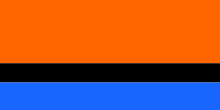
Back شاغوسيون Arabic Îlois Catalan Čagosané Czech Chagossianer German Ĉagosanoj Esperanto Pueblo chagosiano Spanish چاگوسیها Persian Ilois-kansa Finnish Chagossiens French Ilois Croatian
Îlois | |
|---|---|
 | |
 Chagossian man harvesting coconuts, photographed shortly before the first United States encampment, 1971. | |
| Regions with significant populations | |
| |
| Languages | |
| Chagossian Creole · Mauritian Creole · Seychellois Creole · English · French | |
| Religion | |
| Predominantly Christianity | |
| Related ethnic groups | |
| Mauritian Creoles, Malagasy, South Asians, Mozambicans, Austronesian peoples |
The Chagossians (also Îlois [il.wa][3] or Chagos Islanders) are an Indo-African ethnic group originating from French slaves brought to the Chagos Islands, specifically Diego Garcia, Peros Banhos, and the Salomon island chain, in the late 18th century. Under international law, they are the indigenous people of the Chagos archipelago. Most Chagossians now live in Mauritius and the United Kingdom after being forcibly removed by the British government in the late 1960s and early 1970s so that Diego Garcia, the island where most Chagossians lived, could serve as the location for a United States military base. Today, no Chagossians are allowed to live on the island of Diego Garcia or anywhere in the Chagos archipelago, despite many of the islands they used to inhabit being over 160 km away from Diego Garcia.
The Chagossian people's ancestry is mostly African, particularly from Madagascar, Mozambique and other African nations including Mauritius. There is also a significant proportion of Indian and Malay ancestry.[4] The French brought some to the Chagos Islands as slaves from Mauritius in 1786. Others arrived as fishermen, farmers, and coconut plantation workers during the 19th century.
The Chagossians speak Chagossian Creole, a French-based creole language whose vocabulary also incorporates words originating in various African and Asian languages and is part of the Bourbonnais Creole family. Chagossian Creole is still spoken by some of their descendants in Mauritius and the Seychelles. Chagossian people living in the UK speak English. Some settled in the town of Crawley in West Sussex, and the Chagossian community there numbered approximately 3,000 in 2016.[5] Manchester also has a Chagossian community, which has included artist Audrey Albert.[6]
In 2016, the British government rejected the right of the Chagossians to return to the islands after a 45-year legal dispute.[7][8] In 2019, the International Court of Justice issued an advisory opinion stating that the United Kingdom did not have sovereignty over the Chagos Islands and that the administration of the archipelago should be handed over "as rapidly as possible" to Mauritius.[9]
- ^ "UK Supreme Court highlights right of Chagos refugees to return home". New Internationalist. 5 July 2016.
- ^ "Chagos Islanders living in Sussex criticise "problematic" flag raising by Mauritius". ITV.com. 14 February 2022.
- ^ Sand, Peter H. (10 July 2009). "United States and Britain in Diego Garcia". SpringerLink. doi:10.1057/9780230622968.
- ^ "June 2012 update | The UK Chagos Support Association". Chagossupport.org.uk. 12 May 2009. Archived from the original on 12 May 2013. Retrieved 1 August 2013.
- ^ "Chagos Islanders will not be allowed home, UK government says". BBC News. 16 November 2016. Archived from the original on 24 October 2016. Retrieved 16 November 2016.
- ^ House, Manchester International Festival Blackfriars. "MIF21 Creative Fellowships". Manchester International Festival. Archived from the original on 25 May 2022. Retrieved 3 May 2022.
- ^ Cite error: The named reference
guardian20161116was invoked but never defined (see the help page). - ^ Bowcott, Owen (16 November 2016). "Chagos islanders cannot return home, UK Foreign Office confirms". The Guardian.
- ^ "Latest developments | Legal Consequences of the Separation of the Chagos Archipelago from Mauritius in 1965 | International Court of Justice". www.icj-cij.org. Retrieved 18 July 2021.
© MMXXIII Rich X Search. We shall prevail. All rights reserved. Rich X Search